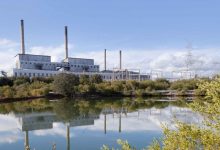The Western Australian government will close its remaining coal fired generators by 2030 and will spend $3.8 billion accelerating the switch to renewables, a move it says will pay for itself within a few years.
State premier Mark McGowan announced on Tuesday the state government would close the Muja and Collie power stations – the last remaining state-owned coal generators – before the end of the decade. It will leave just one coal generator in the state grid.
The Collie power station will close in 2027, while units at the Muja power station will close progressively, with Muja D to close by 2029. They will be replaced by $3.8 billion of new investment in renewable energy infrastructure, including new wind and energy storage projects.
McGowan says without the switch to renewables, consumer bills would soar. He says the state government had been forced to act to cut energy costs, with excess solar power often being ‘spilled’ during the day for no benefit, while the cost of maintaining the ageing coal plants continued to grow.
“The reality is our current electricity system is becoming increasingly unsustainable due to the uptake of rooftop solar and growing demand for renewable options for generation,” McGowan said.
“Maintaining the status quo would see average yearly household power bills increase by over $1,200 within eight years.”
“Alternatively, taxpayers would have to spend billions subsidising the system, taking funding away from key government projects and services.”
McGowan said while he acknowledged the significance of the two power stations to the Collie region where they are based, trying to keep the coal plants operational would ultimately lead to much higher electricity prices for consumers.
“Without the decision to retire the power stations, over the next decade WA would either see major electricity price hikes or taxpayers would be forced to fund billions of dollars of subsidies to keep the system running,” the WA government said in a statement.
To support effected communities, a $547 million Collie Transition Package will be created to help support the region’s transition to new industries in anticipation of the closure of the two power stations.
McGowan said government-owned utility Synergy and the state’s Water Corporation have also begun a feasibility analysis into the potential construction of a new pumped hydro energy storage project, as well as integrating renewable hydrogen as a fuel for its remaining gas generators.
“Western Australia will implement a sensible, managed transition to a greater use of renewables for electricity generation, while ensuring we maintain electricity reliability as a priority,” McGowan said.
“My Government is providing a new half-a-billion dollar package to support Collie through this transition – focusing on industrial opportunities to create new blue collar jobs around the town. This brings our investment in Collie’s transition to over $662 million.”
“The transition will be implemented in a sensible, consultative manner, with long lead times to ensure workers and the wider community can plan for the future,” the WA premier added.
Western Australian energy minister Bill Johnston said the accelerating uptake of renewables, particularly rooftop solar, had meant it was becoming increasingly more expensive to try and keep coal plants in the system.
Johnston added that the government’s investments in new renewable energy projects would ultimately deliver cuts to both energy costs and emissions.
“The amount of rooftop solar coming online currently in WA is roughly the equivalent of adding a new coal-fired generation unit every year,” Johnston said.
“This is putting unprecedented pressure on the system, and we must act to keep costs as low as possible, while transitioning to higher levels of renewables and storage.”
“Our new investment in the South West Interconnected System represents an extraordinary investment in the future of our electricity system, including a massive reduction of Synergy’s carbon emissions.”
The market share of coal generation in Western Australia has been in steady decline, supplying less than 40 per cent of the state’s power last year.
Just one remaining coal power station, the privately-owned Bluewaters power station, may remain operational beyond 2030, but it has faced its own financial challenges. The plant was effectively written off as worthless in 2020 by owners Sumitomo.
Meanwhile, renewables supply around one-third of the state’s power, with gas providing the remainder.
Under its transition plan, the Western Australian government has committed to commissioning no new gas-fired generators after 2030.










